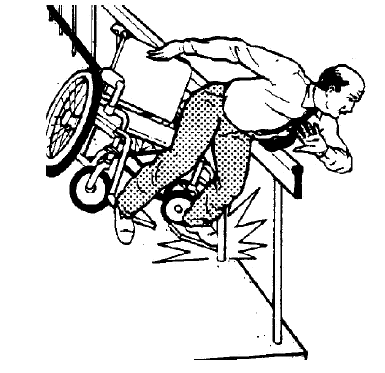Withdrawn Technical Assistance: Common ADA Errors and Omissions in New Construction and Alterations
Error/Omission:
Parts of an accessible route with slopes that exceed 1:20 lack required features including handrails and edge protection.
Result:
When a walkway or other pedestrian surface has a slope greater then 1:20, it is more difficult to maintain control of a wheelchair. Wheelchair users may also not be able to climb up the sloped route without railings. Lack of edge protection may result in injury if a wheelchair user rolls off the side of the route. People who use a mobility device such as crutches, a cane, or a walker may lose their balance or fall while using a sloped section that does not have handrails or edge protection.

Requirement:
4.8.1* General. Any part of an accessible route with a slope greater than 1:20 shall be considered a ramp and shall comply with 4.8.
* Asterisk denotes that related, non-mandatory material is in the Appendix to the Standards.

User Comments/Questions
Add Comment/Question